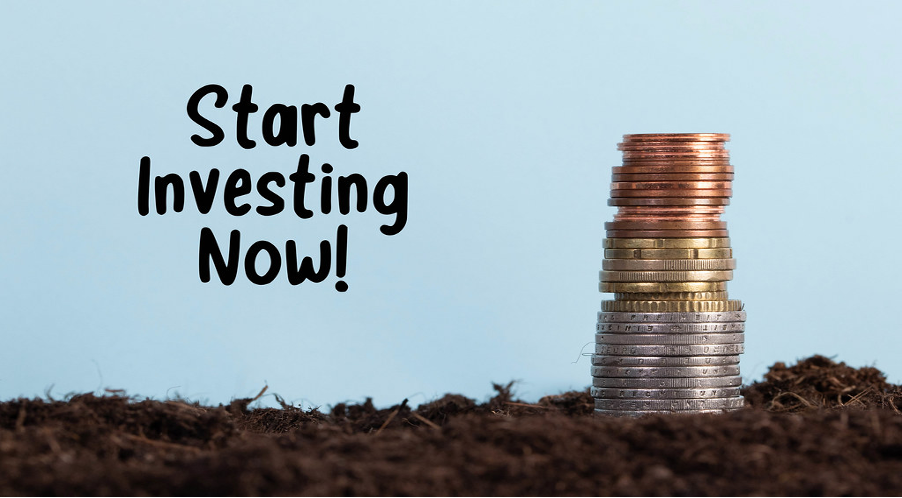Warren Buffet, one of the richest men in the world and a serial investor, was asked in 1999 during a Berkshire Hathaway shareholder meeting what it takes to get rich. His answer was simple.
He said, think of investing as a snowball atop a hill. You then push it down, and it slowly gathers more snow around it. By the time it reaches the bottom, that small snowball atop the hill will have transformed into a bigger snowball.
This is, in a nutshell, the very fundamental idea of compounding in investment. In this post, we will demystify Buffet’s approach and give you tips on how to use compounding to build wealth even if you don’t have too much capital to start with.
What is Compounding?
Compounding is an investment concept where you reinvest the interest or return earned from the principle.

Like the snowball idea, the approach assumes that when you invest small amounts of money over a long period, you are likely to end up with a bigger portfolio, or in the case of the snowball, a much bigger snowball.
The key to investment compounding success is starting as early as possible with whatever capital you can raise.
How Does Compounding in Investment Work?
To better understand compounding, it’s important to use a real-life scenario. Let’s assume there are two individuals with $10,000 worth of capital.
These two individuals then invest in the same asset at the same time. On the other hand, this asset delivers hypothetically a 10% return each year. So, both these individuals expect to make a profit of $1000 per year.
The first person decides to withdraw the return on investment every year while the second person reinvests it back on the principal asset. So, how will their portfolio look in 20 years?
For the person who withdrew the return every year, their earnings over 20 years will be $20,000. When you add the initial $10,000 investment, the overall portfolio value comes to about $30,000.

On the other hand, the second individual who chooses to reinvest the return will be in a much bigger financial position. Think of it this way. In the first year of investment, this person will, of course, make the $1,000 since it’s a 10% return.
They then put the $1000 back into the asset, and now the principal amount is $11,000. As such, they earn a return of $1100 in the second year, and all the while, the person who chose to withdraw their profit is earning $1000.
If this cycle continues, the second individual will have an investment portfolio of around $70,000 in 20 years. His or her profit will be more than double the profit made by the first individual who did not compound.
Why is Compound Investing a Powerful Tool
The biggest reason why most people compound their investments is based on the huge earning potential. But other factors make compounding a very powerful tool, especially for someone who is not necessarily investment savvy. Here are some of these reasons:
You Only Raise Capital Once
As you can see from the example above, once you make the initial investment, you don’t need to put up additional capital when you are compounding. You simply invest the profit back into the asset.

This means that in the end, you are only required to raise money once, and that’s it. However, compounding can be done on a wide array of assets. If you are still able to put up more capital, go ahead and do it.
Simple and Straightforward
Anybody can do compound investing. You don’t need to be a savvy or experienced investor. There is really nothing complicated about it.
Besides, most companies will always give you the chance to automate this process. For example, some leading corporations allow shareholders to opt into programs where their dividend payments are automatically reinvested back into the shares. You don’t even need to lift a finger to get this done.
You Can Start Small
As an investor, you do not need a lot of money to start compound investing. In fact, another variation of compound investing called dollar cost averaging can help you expand your asset pool using small fixed amounts of investments.
We will discuss more of this later. But in any case, anybody can start their compounding journey with whatever little amount they have.
Pro Tips for Effective Compound Investing
To make compound investing work for you, there are some important steps you must take. We have covered the most crucial ones below:

Start Early
There will never be any right time for investing. In fact, the sooner you start, the better. As Warren Buffet says, the trick to building a bigger snowball is to start when you are too young or live for as long as possible.
One of those things is guaranteed. We are all young once, right? But how long we live is not always up to us. So, start now with whatever capital you can raise.
Pick the Right Asset
The amount of money you make from compound investing is always down to the quality of the underlying asset. In fact, very few asset classes can deliver a consistent yearly return for the next 20 years or so.
As a golden rule, it is better to focus on safe investments even if they pay less in return. You don’t need a 60% profit per year to grow your wealth. Even a 10% gain can achieve so much when compounded over time.
Also, you may want to consider assets that generate income. For example, you can invest in companies with a history of paying a dividend or corporate bonds with a decent yield.
Think Long Term
Compound investing is designed for people who have no problem waiting 10 to 30 years for their money to grow. In fact, the only reason why this investment approach is so successful is because of the time it takes to accrue returns.
So, only get into compound investing with the goal of actualizing long-term gains. Besides, there are many other short-term investment options for people who want a short-term commitment.
Be Patient
The main reason why most investors fail is that they lack a strategy and the discipline needed to stick to it. Compound investing is not any different.
If you are not patient and disciplined enough to reinvest your returns over a set period of time, then you will not be able to actualize the gains you have in mind.
What Are the Risks of Compound Investing
With all its benefits, compounding also comes with a fair share of risks. While these risks may vary depending on the type of asset you are buying, it’s still worth knowing what you are getting into. Here we go:

Capital Depreciation
Naturally, money will lose value over time due to inflation. If someone was to give you $1000 today, there is a lot you can do with it now than, say, ten years in the future.
So, even as you compound your assets, you should be aware of potential inflation concerns and how they may affect your portfolio.
No Guaranteed Returns
Compound investing works if there is a guaranteed return on investment each year. While some assets have shown superb consistency in offering returns over the years, others are a bit erratic.
For instance, you may get a 10% return on investment in one year and get nothing in the next. These fluctuations can affect how you compound, and, in the end, the results may not be as good as you expect.
Depreciating Value of the Underlying Asset
When you invest in any asset, you must always accept the possibility that it may depreciate in value over time. There could be many reasons for this.
Sometimes it’s an unforeseen economic crisis or some disruptive changes in the marketplace. Either way, when you start to see the signs, you must exit as soon as possible.
Is Dollar-Cost-Averaging Compound Investing
Dollar-Cost-Averaging is also an investing strategy that follows almost the same unique principle as compounding. The strategy involves investing a fixed amount of money over a fixed period of time.

For example, if you earn an income of $50,000 a year, you can decide to invest $10,000 each year in a given asset regardless of the price at any given time.
If you do this for ten years, you will have a huge portfolio, especially if the underlying asset’s value has appreciated significantly over time.
With dollar-cost-averaging, the idea is to buy assets to save your money against inflation. But it has so many other benefits too.
In Conclusion
Building wealth is not a simple thing. Most people these days don’t even make enough money to survive, let alone invest. But there are many strategies that can turn your small money into a much larger fortune over time.
And besides, the moment you have an asset pool under your name, it is always much easier to access capital and wealth. Compounding can help significantly with this. You just have to do it right and do it now.
